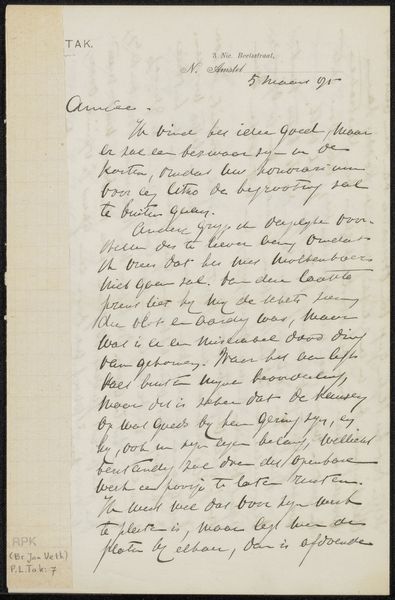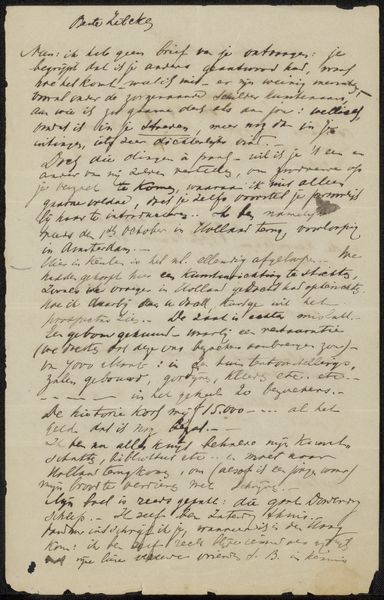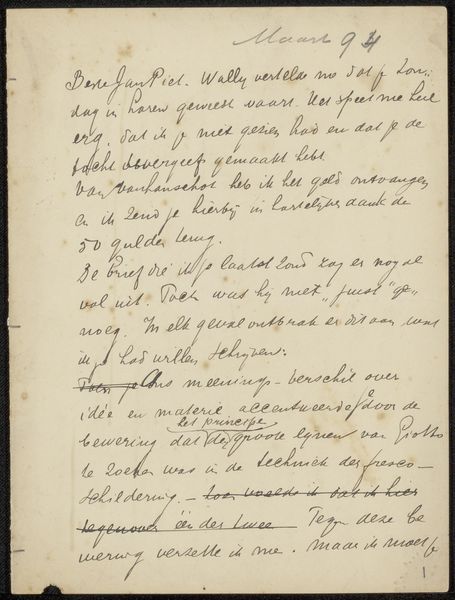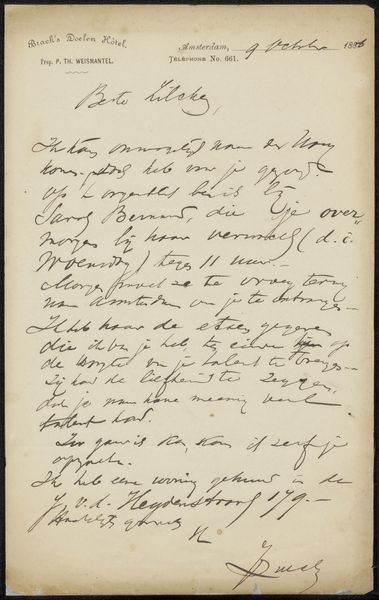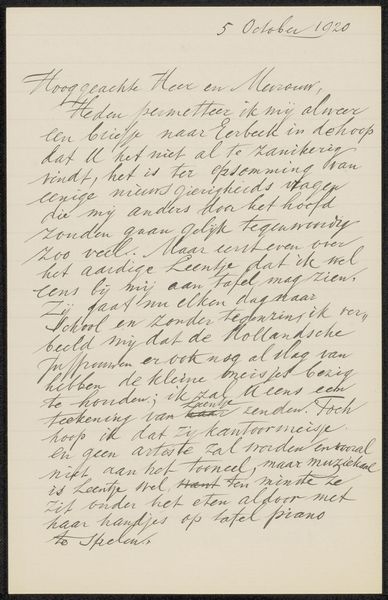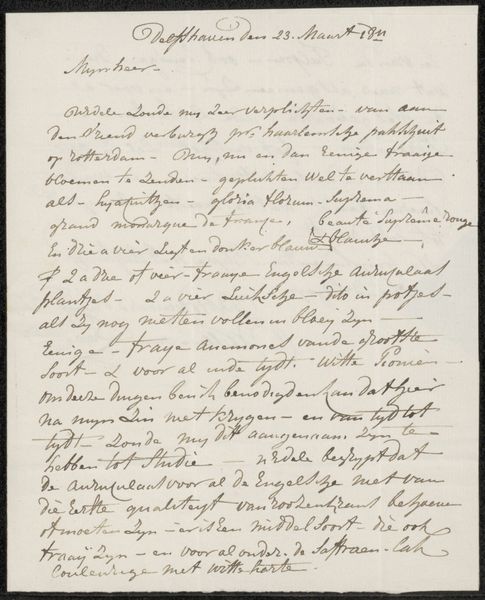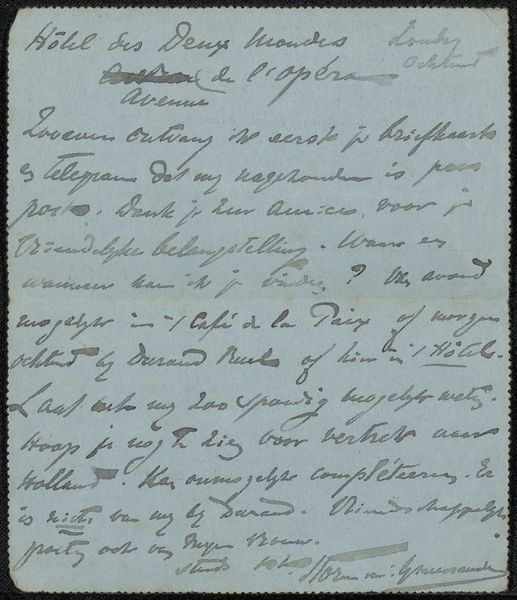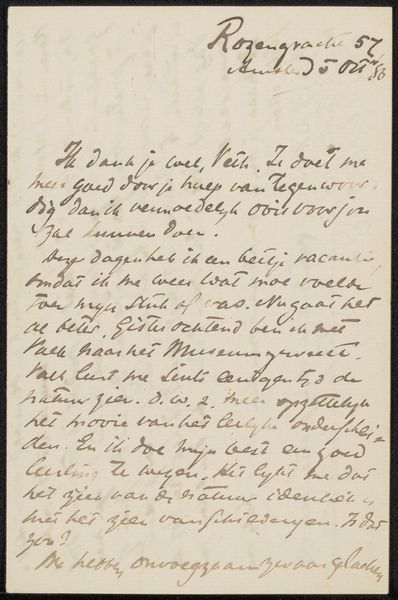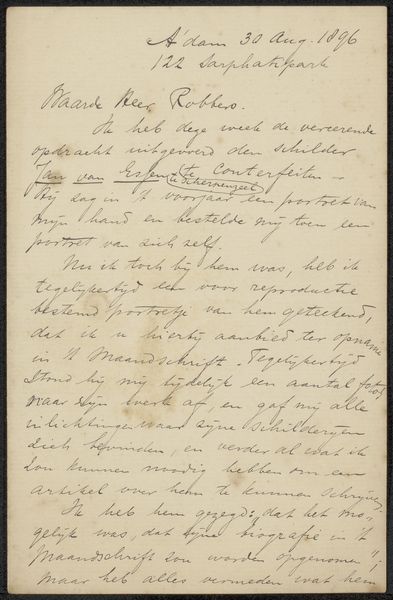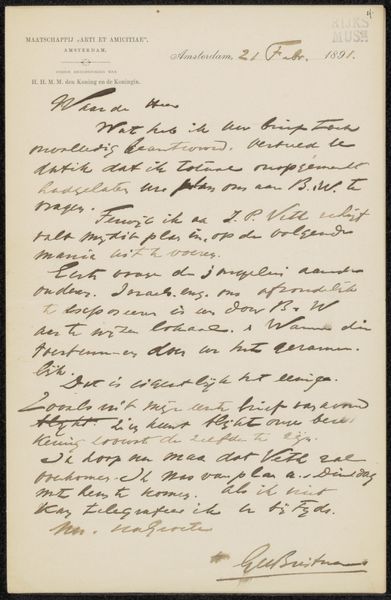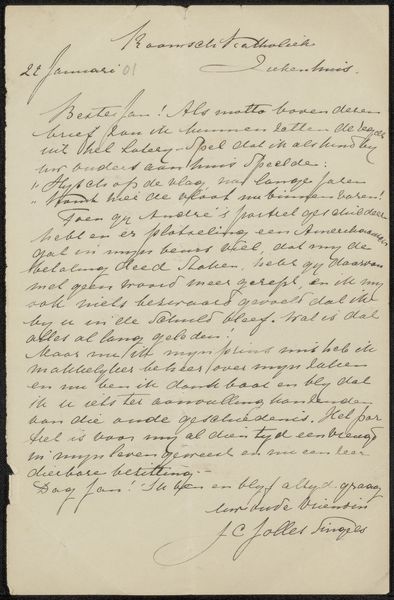
Copyright: Rijks Museum: Open Domain
This manuscript page, written by August Allebé, likely dates to the late 19th or early 20th century in the Netherlands. It’s a letter, penned in elegant cursive, concerning an upcoming exhibition. Letters like these are revealing documents in the social history of art. They offer a glimpse into the relationships between artists, their patrons, and the institutions that supported them. We learn about the schedules of exhibitions, the dynamics of artistic networks, and the economic considerations that shaped artistic production. Allebé mentions Fred Muller, a well-known art dealer. Research into Muller’s gallery would provide context to the kind of art Allebé was producing and exhibiting. These archives are crucial in understanding the institutional support structures that sustained artists like Allebé, and how these impacted the public role of art in Dutch society. By studying such documents, we can move beyond formal analysis to understand the complex social conditions that shaped artistic production in the Netherlands.
Comments
No comments
Be the first to comment and join the conversation on the ultimate creative platform.
